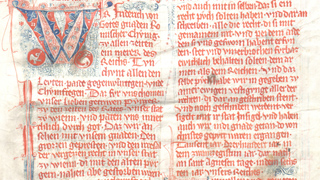Rising to the Rank of a City - History of Vienna
Early Middle Ages
It was only after the Magyar threat had been contained, following the Battle of the Lechfeld in 955, and the establishment of the margravate of Austria under the Babenbergs (976) had brought forth a "quasi-state" that the basis for a general increase in settlement in the fledgling country was laid. The effects did not become fully palpable for Vienna. The city continued to sit virtually on the Magyar frontier well into the 12th century, until the Austrian sovereigns from the Babenberg dynasty had finally consolidated their position. Until the first half of the 12th century, the centre of Babenberg power lay west of Vienna. Around 1150 the Austrian margraves, who were also dukes of Bavaria at the time, transferred their residence to Vienna. They founded Vienna's oldest monastery, Sankt Maria zu den Schotten (St. Mary of the Scots). This (now) direct contact with the sovereigns contributed strongly to Vienna's unfolding into a veritable town. It is interesting to underline that Vienna was not "founded" by a lord, but that, on the other hand, the role of the sovereign was a significant one. The shining light emulated was most of all the old Bavarian capital of Ratisbon, which Vienna outdid, however, within a few decades.
High Middle Ages
The outward sign of any medieval city was its surrounding wall. Vienna's city wall was built around 1200. The community was granted its first privilege in 1221. Vienna was termed one of the principal cities of the empire after Cologne. At that time, in the early 13th century, Vienna was already part and parcel of an extensive network of trade relations. This network made use of the Danube route and benefited from intensive contacts with Venice. A major upgrading came with the granting of the so-called "Stapelrecht". Under this privilege non-resident tradesmen had to display their goods for sale in the city. This afforded the Viennese the very profitable opportunity to act as middlemen. The city's expansion and development is particularly reflected in the increasing splendour and number of churches, although the foundations thereto had been laid by the Babenbergs still. There was growing construction at the time even in the suburban area, outside the walls, and development crystallised along the main arteries leading into and out of the city.
City of Vienna | Municipal and provincial archives of Vienna
Contact form

